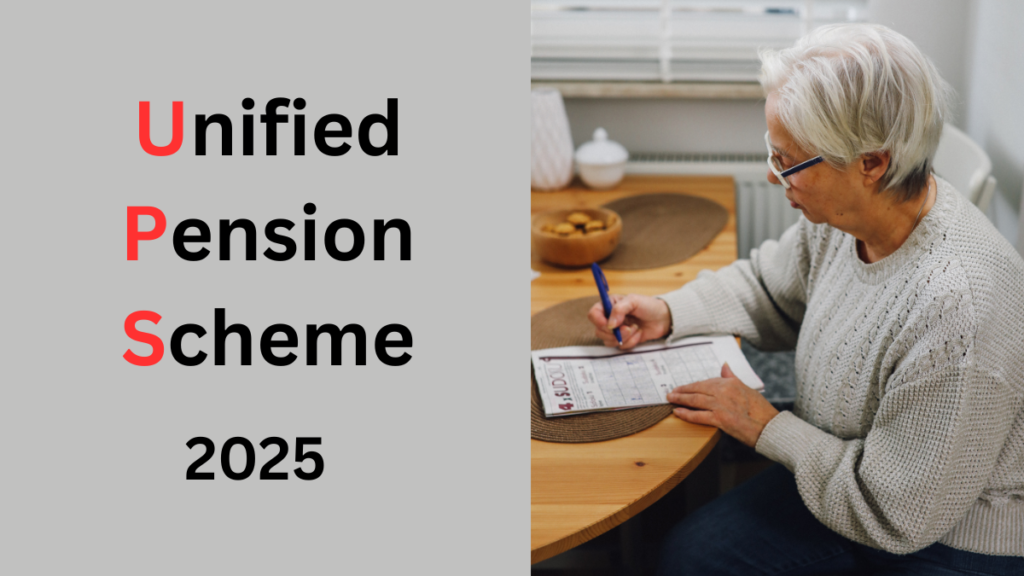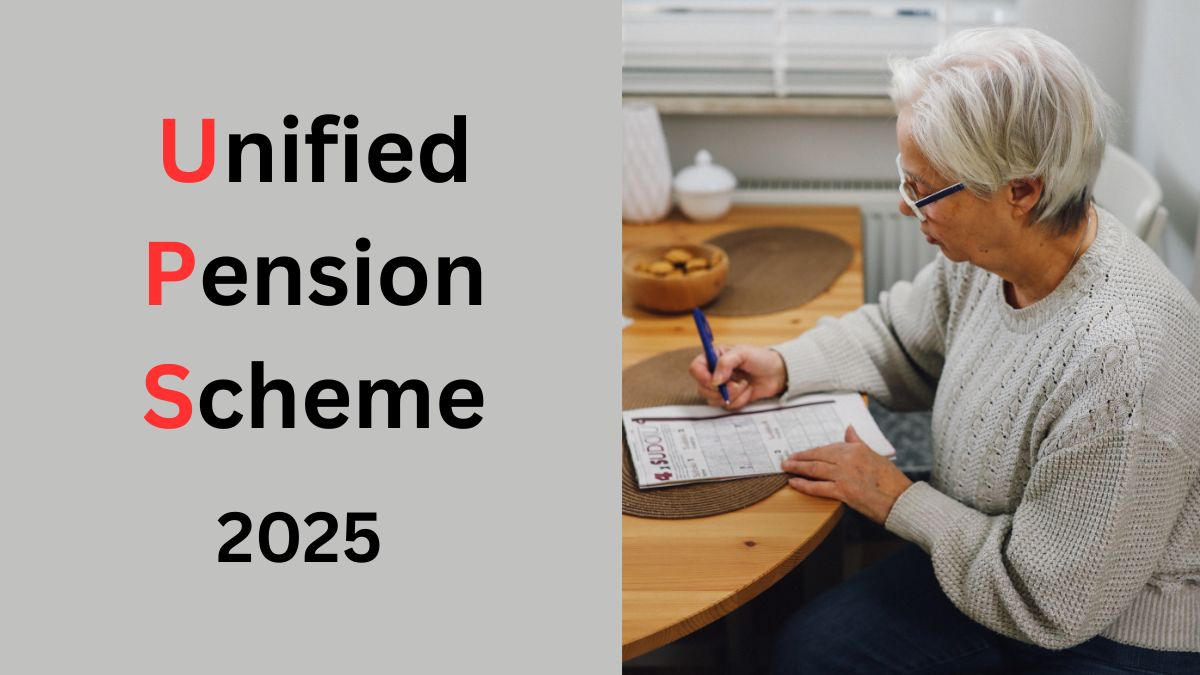The Pension Fund Regulatory and Development Authority (PFRDA) has rolled out a transformative initiative—the Unified Pension Scheme (UPS)—under the National Pension System (NPS). Officially notified on March 19, 2025, these new regulations take effect from April 1, 2025, offering eligible individuals the chance to reshape their retirement strategy.
Let’s unpack what this scheme means for you and your future.

What is the Unified Pension Scheme (UPS)?
Think of UPS as a customized pension plan tailored for central government employees already covered under NPS. It’s built to offer financial security post-retirement, and also extends support to eligible family members.
Key Highlights at a Glance:
-
Optional: Not mandatory, you choose whether to opt in.
-
One-time Selection: Once chosen, there’s no turning back.
-
Spouses covered: Legally married wives of deceased NPS pensioners can benefit.
-
Government-backed contributions
-
Investment-based pension returns
Who is Eligible to Join UPS?
The UPS is not for everyone—it specifically targets certain categories of government employees and dependents.
| Eligible Group | Criteria |
|---|---|
| Existing Employees | Must already be enrolled in NPS |
| Newly Recruited Employees | Must decide within 30 days of joining service |
| Retired Employees | Must have been previously covered under NPS |
| Spouse of Deceased Pensioner | Legally married wife of deceased NPS retiree (if they hadn’t opted for UPS) |
How and When to Apply for UPS?
Timing is everything! If you’re planning to switch, here are the deadlines and application modes you should know:
Application Windows:
-
Existing Employees: Apply within 3 months from April 1, 2025
-
New Joinees: Apply within 30 days of joining
-
Retired Employees and Spouses: Application timelines to be clarified by government notification
Application Process:
-
Online: Via the CRA Portal
-
Offline: Submit forms to Head of Office or DDO
Required Forms:
| Form | Applicant Type |
|---|---|
| Form A1 | Newly recruited employees |
| Form A2 | Existing employees |
| Form B2 | Retired employees |
| Form B6 | Spouses of deceased pensioners |
Note: Miss the deadline? You’ll remain under NPS forever. No second chances!
Contribution Details
Wondering how much you and the government will contribute? Here’s a quick snapshot:
| Contribution Type | % of Basic Salary + DA |
|---|---|
| Employee’s Contribution | 10% |
| Government’s Contribution | 10% |
| Extra Government Contribution (Pool) | 8.5% |
This additional 8.5% builds a collective fund (Pool Corpus) to ensure the scheme’s stability.
Where is Your Money Invested?
UPS follows a dual investment model, giving employees a mix of flexibility and security.
Two Investment Mechanisms:
-
Individual Corpus (Chosen by employee):
-
Government Securities (Scheme G)
-
Life Cycle Funds (LC-25, LC-50)
-
-
Collective Corpus (Pool Corpus):
-
Managed under government norms for long-term returns
-
Performance-based Outcomes:
-
Excess Fund Growth? You keep the surplus!
-
Underperformance? Government may support or adjust payouts
Pension and Post-Retirement Benefits
To be eligible for pension under UPS, you must complete at least 10 years of service.
Pension Eligibility Scenarios:
-
Voluntary Retirement: Allowed after 25 years of service
-
Compulsory Retirement (FR 56(j)): Eligible unless dismissed due to misconduct
Retirement Benefits:
-
Lump Sum: Based on years of service and last drawn salary
-
Monthly Pension: Regular income for lifetime
Pension Calculation Formula
The pension is calculated based on a structured formula (to be detailed in further guidelines), considering:
-
Last drawn salary
-
Total service period
-
Accumulated corpus and returns
Withdrawal Rules & Family Pension
| Situation | What Happens |
|---|---|
| Employee Retires | Can withdraw up to 60% of corpus (affects monthly pension) |
| Employee Dies | Spouse receives 60% of last drawn pension for life |
| Dearness Relief (DR) | Applies only after pension disbursal starts |
Partial Withdrawal Options
Yes, partial withdrawals are allowed—but with a few conditions:
-
Only after 3 years of enrollment
-
Allowed up to 3 times
-
Valid reasons include:
-
Children’s higher education or marriage
-
House purchase or construction
-
Medical treatment for serious illness/disability
-
Skill development courses
-
If the employee is unwell, family members can submit the request on their behalf.
Conclusion: Why UPS Might Be Worth Considering
The Unified Pension Scheme is a promising upgrade over traditional NPS for many government employees. With structured contributions, family benefits, investment flexibility, and long-term pension security—it’s a smart move for those thinking ahead.
But remember—once you opt in, there’s no going back. Choose wisely, consult your HR/finance head, and make a decision that best suits your future goals.
Frequently Asked Questions (FAQs)
1. Is it mandatory to opt for the Unified Pension Scheme?
No, the UPS is completely optional. If you’re satisfied with NPS, you can continue with it.
2. What happens if I miss the application deadline?
If you don’t apply within the specified period, you will remain in NPS permanently and won’t get another chance to switch.
3. Can the spouse of a deceased pensioner apply for UPS?
Yes, if the retiree was under NPS and hadn’t opted for UPS, the legally married wife can claim the benefits.
4. Will I receive both a lump sum and monthly pension under UPS?
Yes, retirees will receive a lump sum amount based on their service and salary, along with a monthly pension.
Click here to learn more
